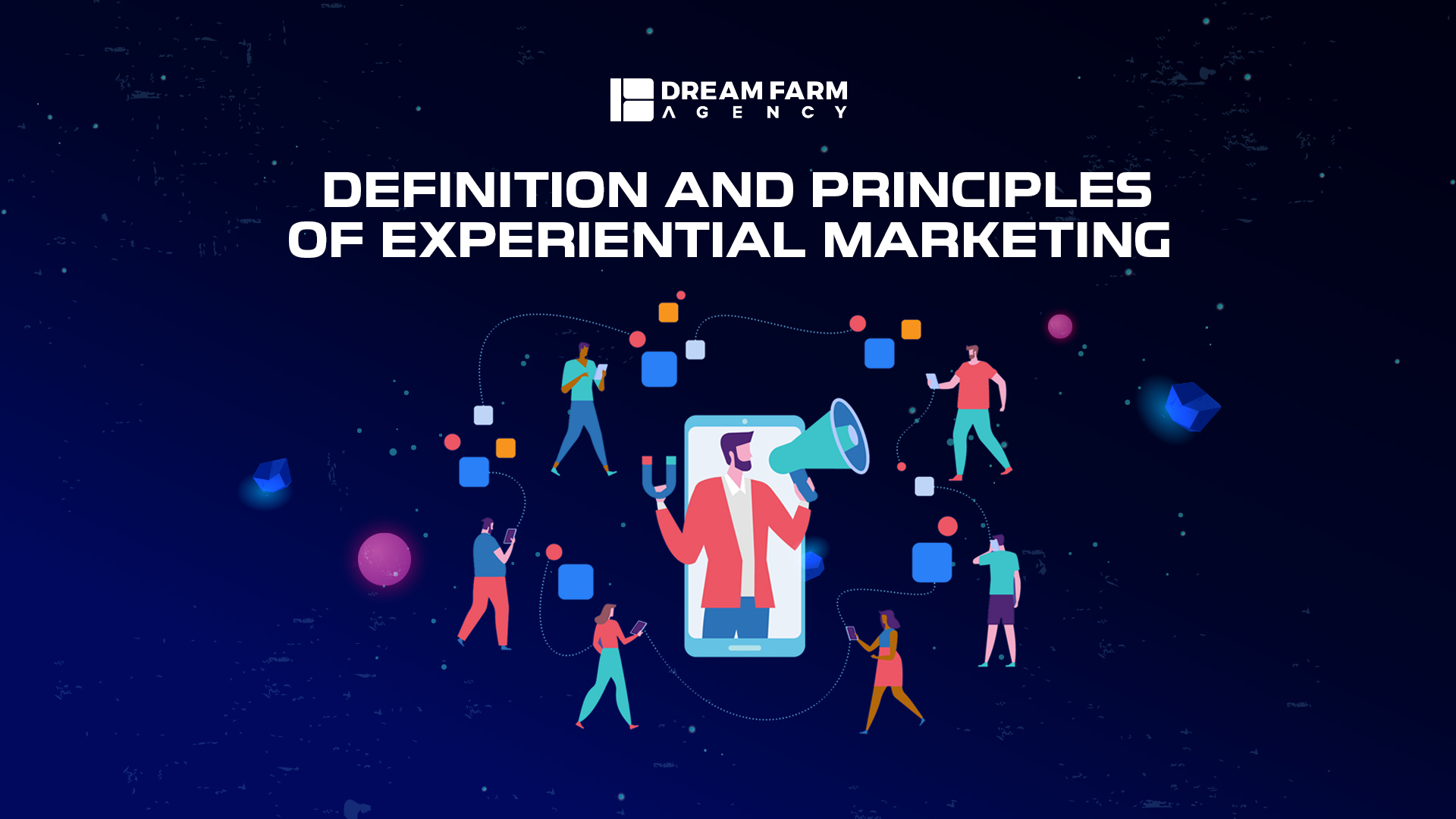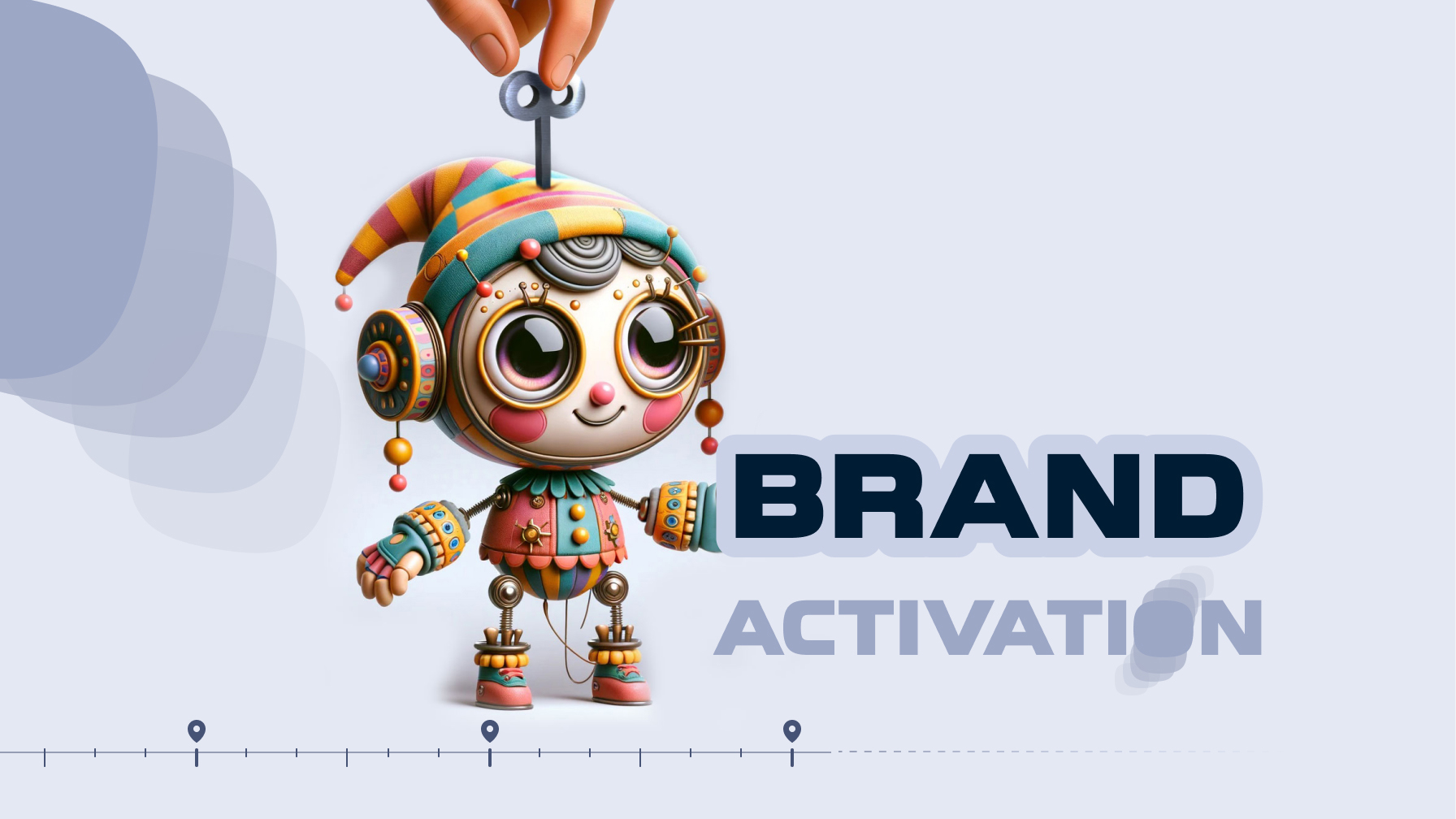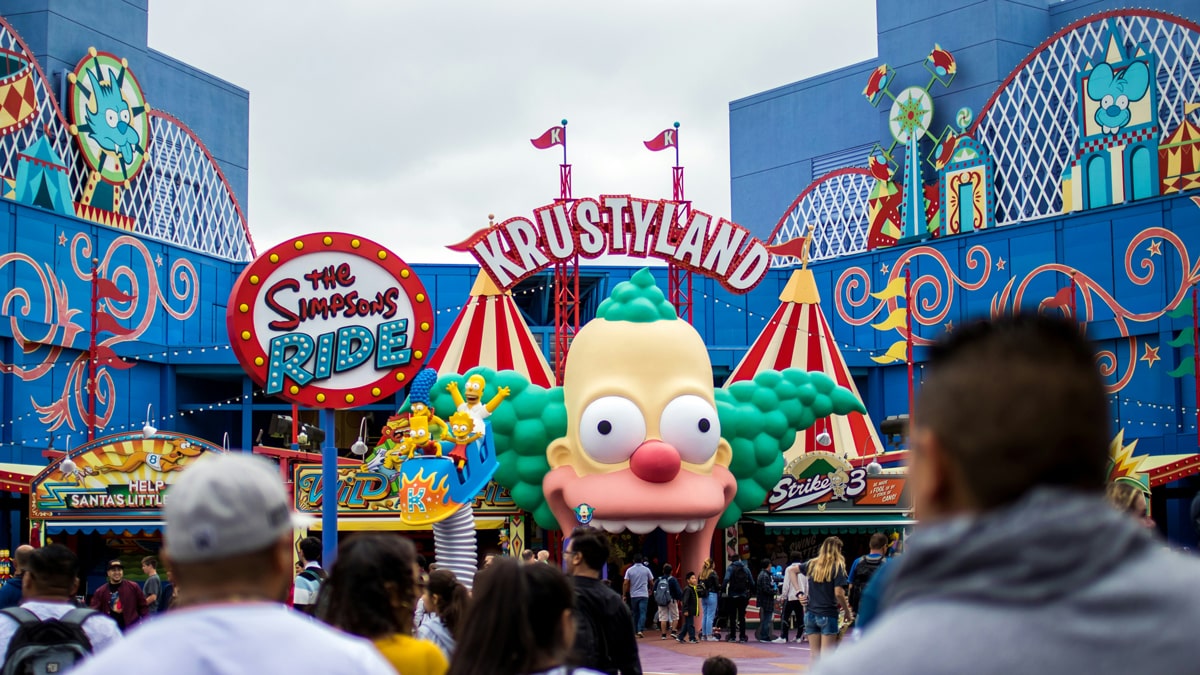
- Brief but Meaningful Introduction
- Why Is Experiential Marketing So Valuable?
- How to Develop an Experiential Marketing Strategy
- Track Your Marketing Journey via Technology
- Most Popular Experiential Marketing Trends
- Inspiring Examples of Experiential Marketing
- Strategic Brands Partnership
- Brand Activation: The Missing Puzzle Piece
Experiential marketing enables direct engagement between consumers and businesses to establish brand awareness. It is a powerful strategy for cultivating brand loyalty based on innovative and dynamic experiences.
Although there exists a myriad of opportunities, it is important to have enough knowledge to tailor a method that aligns best with your business.
Here, you will find practicable guidelines and some valuable success stories for your deeper understanding. The content is notably based on our expertise in creating personalized and innovative digital solutions for our clients to enhance the brand experience.
Brief but Meaningful Introduction
Also known as engagement marketing, experiential marketing actively centers around consumers and cultivates a sense of community. Unlike traditional advertising, experiential marketing intends to provide consumers with tangible experiences by creating unforgettable memories.
By trying to appeal to all five senses (touch, sight, hearing, smell, and taste), experiential marketing creates deep connections in a way that traditional channels cannot match. According to a report by the Global Experiential Marketing Forecast1, global experiential marketing spend has been significantly on the rise since 2019. It is anticipated to continue its upward trajectory due to its effect on acquiring repeat customers.
Although there are several trends to be put into practice, such as brand activation, events, retail installations, immersive experiences, interactive technologies, product demonstrations, etc., you need to choose the most effective ones to maximize the potential of your business.

Why Is Experiential Marketing So Valuable?
Experiential marketing serves as an interactive medium, encouraging profound connections between brands and consumers. And the positive emotional and sensorial engagement will prompt consumers to share their enthusiasm with other people. This is how experiential marketing can provide a route to Word-of-Mouth Marketing (WOMM). Simple as ABC!
Conventional ads are perceived as impersonal and easily overlooked by many. On the other hand, experiential marketing creates authentic and two-way conversations. This approach not only humanizes the brand but also breaks through the advertising noise prevalent in our daily lives.
For many businesses, irrespective of their current stance, an experiential marketing plan of action serves as a source of motivation, lead generation, and conversion rate optimization.

How to Develop an Experiential Marketing Strategy
Throughout your journey to practice experiential marketing in your business, experience management is vital to positively impact employees, partners, and customers. Experience management serves as a comprehensive methodology for monitoring, assessing, analyzing, and enhancing every interaction.
This broad spectrum includes employees, customers, vendors, suppliers, and various stakeholders. It is recommended to be your reference point in every stage of your business roadmap.
Nonetheless, to achieve the best results, your general experiential marketing strategy has to go beyond mere measurement and offer a dynamic solution for interactions across diverse touchpoints.
So you have to consider a plain and navigable experiential marketing program outlining your business goals to drive transformation over an extended period. Much like reaching a destination requires following a well-thought-out course, businesses aspiring to attain greater success through enhanced experiences benefit from an experiential marketing program roadmap.
The provided guidelines below can be worthwhile to achieve a successful experience:
Understand Your Target Audience
Some businesses invest heavily in creating unique and unforgettable experiences but often overlook the significance of understanding their target audience. The marketing team should dedicate its time to research and understand the preferences and needs of your customers.
Understanding the audience can ensure the effectiveness of the marketing strategy and improve communications that resonate across your borders on a personal level. There are two most important requirements at this stage:
- The first is to know the needs and financial ability of the consumers.
- The second is to see if what the business offers is a solution to a problem or not.
Creatively addressing these fundamental aspects not only enhances the relevance of your experiential marketing strategy but also establishes a foundation for meaningful and effective communication that goes beyond mere features of the products or services.
Create Experiential Content
Experiential content is a powerful means of conveying the brand’s narrative. It enables consumers to connect more deeply with your brand’s identity and core values on a tangible level. It can also be implemented in both offline and online marketing to reach a dynamic approach.
Furthermore, experiential content facilitates the creation of immersive and engaging experiences in which consumers actively participate. So your business sets itself apart from competitors by implementing this gentle move.
It is indeed a conduit for education, inspiration, and the establishment of enduring impressions. By incorporating context and an understanding of the customer’s preferences, brands can craft highly relevant experiences.
Both information and enjoyment are essential in marketing campaigns for an impactful brand experience. In this regard, businesses may prefer to collaborate with influencers, particularly those aligned with their brand’s values.
This tactic not only enhances credibility but also motivates consumers to make purchases based on recommendations. The conventional ‘audience targeting’ is no longer enough. Personal connection with the brand’s story adds significant depth to the customer experience.
Develop a Marketing Campaign with Value
Marketing campaigns help businesses to stay focused, in contrast to conventional marketing methods. This is because goals and objectives prevent aimless strategies.
Marketing campaign ideas should be unique and aligned with the audience’s preferences. So it is of no use to replicate previous campaigns or imitate others since it lacks authenticity.
One memorable example is the creativity used when Adidas opened Derrick Rose’s ‘jump store’ in East London in 2013. To kick off the campaign, Derrick Rose, an NBA professional basketball player, joined the opening event. What caught everyone’s attention was a 10-foot-high shelf showcasing pairs of sneakers with Rose’s signature.
The exciting part is that if anyone managed to make the jump and reach the sneakers, they were rewarded to take a pair home. It’s as straightforward as that.
Although each marketing campaign requires time and effort, analyzing performance via real-time data and feedback is also crucial to measure its success and effectiveness based on pre-set goals.
Finally, necessary adjustments together with novel opportunities and ideas can enhance the effectiveness of experiential marketing campaigns.
Use MarTech
Marketing Technology (or MarTech) helps businesses better interact with customers. What we currently call experiential marketing is also due to technological advancements. The rise of Augmented Reality, Virtual Reality, and Generative AI helps to create personalized and interactive experiences.
For example, Coca-Cola utilized AR technology in its holiday promotion in 2019. Its newly launched app enabled users to scan the label on a bottle and experience 3D holiday-themed polar bear mascots.
The metaverse further allows brands to create virtual immersive experiences accessible to users worldwide. To bridge the gap for those unfamiliar with the concept, Of course, businesses may need brand ambassadors to facilitate the metaverse experiences of the consumers.
Of course, experiential tech trends are anticipated to align with Web3 technologies, influencing new marketing strategies. However, despite digital technology playing a crucial role, having on-site personnel remains essential.
Take Advantage of Social Media
Successful experiential marketing campaigns can easily impact their audiences through social media platforms, enhancing brand exposure and engagement. Businesses can implement experiential advertising to craft shareable and memorable moments.
Meanwhile, User-Generated Content (UGC) and online communities maximize the experiential marketing influence. For instance, brands can design visually appealing and unique experiences that are inherently share-worthy on Instagram.
Hashtags
Brands can be tracked via hashtags including brand names and geographical identification data. Further, social media activity has real-time monitoring capacity to measure the campaign’s impact and engagement with users.
Collaboration with Influencers
Collaborating with influencers can indeed enhance the visibility of an experiential advertising campaign. They can participate in campaigns firsthand and share their experiences with new audiences. This easy tactic has a ripple effect on UGC.
Contests
Contests, where participants submit photos or videos related to the event using branded hashtags, can also be functional for UGC. It can be enhanced by offering attractive rewards or exclusive experiences.
Real-Time Engagement
It is a must to engage with users in real time, respond to posts, acknowledge attendee experiences, and repost standout content. Going live, behind-the-scenes footage, and interactive moments during the event builds excitement among online audiences unable to attend in person.
No matter which technique you make use of, the power of UGC and online communities transforms every experiential campaign into an online phenomenon. Your content will certainly resonate with audiences, get users excited, and enhance brand advocacy.
Track Your Marketing Journey via Technology
Before diving into the experiential marketing intricacies, it’s crucial to establish your goal. Subsequently, identify key performance indicators (KPIs) for your objectives. For instance, if the aim is to grow a social media platform following, you have to track metrics such as engagement, reach, leads, and conversions before and after the event.
What’s more, having the appropriate technology in place is essential. Consider integrating a lead capture app with your CRM to trace sales back to their origin. If navigating this field is unfamiliar, you can seek professional consultation to better select suitable software for your specific needs.
While planning your event and exploring software and technological options, you can focus on designing the data collection method itself. This seemingly insignificant step is a crucial aspect of the activation, presenting an opportunity to connect with potential customers on a deeper level.
Wearables such as watches and wristbands are essential tools for tracking experiential marketing events. They provide valuable insights for measuring KPIs and Return on Investment (ROI).
Meanwhile, technologies like Near-Field Communication (NFC) and Radio-Frequency Identification (RFID) embedded in wearables enhance data collection, enabling user tracking and engagement analysis.
QR codes and mobile event apps further contribute to data collection. They can be integrated with other event planning technologies. Additionally, you can gain accurate in-depth information by using barcode scanners.
After all, tracing your experiential marketing journey, with passive and active technologies, helps you to understand the demographics of your audience – distinguishing potential clients from non-prospects. This is definitely challenging without tracking software.
Most Popular Experiential Marketing Trends
We provide you with the most experiential marketing trends below which can open new avenues for your business. Myriads of opportunities can arise from each option. You just need to recognize potential capabilities.
Experiential Events
Experiential events provide proper contexts for direct experience and interaction between consumers and brands. Their most important feature is to enable 5-sense engagement. Flexible approaches are tailored for holding events to boost brand awareness and conversions.
According to EventTrack2, 74% of attendees expressed that participating in branded events with experiential marketing increased the likelihood of purchasing the promoted products and services.
That being so, defining objectives, setting the budget, and working out a plan of action are the fundamental requirements. Above all, brands have to be authentic and use creativity.
Hybrid Events and Immersive Technology
As technological progress has given rise to hybrid events, consumers exclusively engage in virtual interactions establishing genuine connections with the community and the brands. The promise of metaverse technology emerges as a potential solution to overcome the challenge of physical presence at the event, captivating the senses of the audience.
Virtual participants can hence engage more actively in immersive metaverse experiences, not just watching live streaming events on their screens. Dream Farm Agency offers personalized and interactive media solutions via metaverse and other cutting-edge technologies you may want to try.
Pop-Up Events
Pop-ups offer additional interaction points for better customer engagement outside the traditional brick-and-mortar store or online platform. Pop-up marketing enhances sales opportunities, attracting fresh leads.
Pop-ups are creative experiences unfolded briefly in unusual and unpredictable locations. The element of surprise, innovation, and enjoyment can even influence audiences who are not present at the event. So, these positive advantages bring about brand engagement and brand awareness.
Although the visibility of pop-ups extends to everyone, it’s crucial to ensure they are not intrusive or distractive.
Another effective approach is Ambient Marketing, leveraging unconventional locations or items as communication channels to promote products or services. This method entails deploying creative advertising messages, engaging with the target audience, and aiming to evoke emotional responses from consumers.
A very good example is Coca-Cola putting a special Coke machine at a bus stop in Uppsala, a Swedish city:
Inspiring Examples of Experiential Marketing
Engaging individuals in interactive experiences enhances the overall results. No matter what types of events and activities your business offers, you need to be creative and practically use imaginative concepts. So, take some hints from success stories which can indeed broaden your outlook.
‘Scoops Ahoy’ from Stranger Things in Solid Reality
Baskin-Robbins, the world’s largest retail ice cream brand, and Netflix, an American streaming service, in a creative partnership, recreated the fictional ice cream booth, Scoops Ahoy, from the renowned Netflix show, Stranger Things.
They offered fans an authentic experience that not only reminded them of the show’s setting and the 80s era but also promoted the unique ‘USS Butterscotch’ flavor which idea Baskin-Robbins took from the show.
Exclusively available for a limited period across Baskin-Robbins chain stores, it attracted Netflix users and established a more profound emotional bond with the beloved show.
Benefit’s ‘Lashtastic’ Virtual Media Campaign
Benefit Cosmetics introduced an innovative virtual event campaign to introduce its mascara product, inviting participants to try a gamified AR experience. They had to register on the company’s website, play spin-and-win games, collect various ‘tokens’, and win rewards.
Rewards included Benefit’s products, discounts, or even online consultations. This is a noteworthy example of experiential marketing with remarkable success in a period marked by a significant decline in eye makeup sales.
Travis Scott’s Concert inside Fortnite’s Shooter
American rap artist, Travis Scott, delivered a fully animated live performance inside Fortnite’s online shooter simulator, attracting 12 million people. Fortnite stands as one of the globe’s most widely embraced game platforms with a huge number of fans from around the world.
The concert offered trippy and psychedelic effects and the players virtually experienced being submerged underwater or flying around throughout the concert. Scott took advantage of the platform to debut a new song as millions of records were sold.
Disneyland’s Mad Hatter Surprise
Disney demonstrated its mastery and creativity when promoting the film ‘Alice Through the Looking Glass’. They surprised their fans at Disney Park when Johnny Depp was live-streamed onto what initially appeared to be a static billboard.
The Mad Hatter, portrayed by Depp, surprised and engaged viewers with movement, speech, and interactive responses.
The marketing team skillfully transformed the genuine reactions of park attendees into a video, generating millions of views. What started as unique and exclusive experiential marketing evolved into a digital marketing initiative that effectively reached a wider audience.
Strategic Brands Partnership
Collaboration can elevate experiential marketing strategy to new heights. The key lies in finding the right partners and embracing creativity to craft genuinely unforgettable experiences for the audience.
This approach involves various forms of collaboration, such as co-branding, shared experiential marketing campaigns, and joint product development. Successful partnerships hinge on shared goals, values, and audience demographics to ensure mutually beneficial collaborations.
However, collaboration necessitates clear brand distinction and well-defined exit strategies to prevent confusion or potential challenges to brand identity. This is because the goal of collaborative marketing is to enhance a brand’s identity and improve its market position.
Therefore, the effectiveness of brand collaboration lies in selecting the right partner, with both brands’ audiences sharing commonalities. Considering the sensitivity of this measure, businesses should not only be very selective in partnerships but also be cautious against collaborations driven solely by cost-cutting or audience size.
Similar objectives, values, and audiences ultimately bring broader visions, rather than diluting the brand’s identity. Brands must consider whether their core audiences mesh well, ensuring a meaningful connection between the customer bases.
Selecting the right partner is vital for collaborative marketing success. For example, partnerships between brands with conflicting values or competing products may not be beneficial, as shared audiences typically have similar preferences, goals, and demographics.

Brand Activation: The Missing Puzzle Piece
To wrap it up, let’s assure you that experiential marketing on its own cannot do magic for a business. But why? It is because it only relies on engaging activities to promote products or services. What’s more, brand activation is a step further.
Although experiential marketing acts as its central technique with a specific goal, brand activation demonstrates the trustworthiness and authenticity of the marketing messages.
While many businesses are enthusiastic about experiential marketing techniques and have spent a lot on various projects, the most important weak points are neglected by many. Believe it or not, experiential marketing objectives are less precise, and the ‘experiences’ need not be directly linked to the claims!
Brand activation instead enables consumers to use a product or partake in a service. When consumers connect their experience with the brand, values are ‘activated’ and claims are proven which leaves a strong impression.
Consistent brand activation efforts develop positive opinions in consumers who subsequently share their opinions with others.
For example, a perfume brand can offer free perfumes to allow consumers to experience them. Participants will easily examine and confirm the truthfulness of the marketing campaign compared to competitors.
Brand activation guarantees experiential strategies with a distinct focus on building lasting relationships with the brands. Both experiential marketing and brand activation represent a contemporary, experience-centric approach, emphasizing close interaction, and event-based strategies that foster engagement.
When executed effectively, these approaches attract customers, create memorable experiences, generate UGC, and potentially go viral. After all, product sales will be considerably on the rise.
If you need professional consultation, reach out to discover experiential marketing possibilities for your business. Or have inspiring experiential marketing experience? Share it with us in the comment section below.

Fareena



